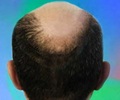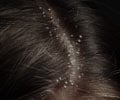About
Dandruff or Seborrheic dermatitis affects the skin and is a common cause of hair loss. It is a chronic inflammatory skin disease.
'Seborrhea' refers to the oiliness of the skin, particularly of the scalp and face. Individuals with seborrhea may later develop seborrheic dermatitis, a common disorder of the skin that is characterized by redness, itchiness, flaking or scaling. It particularly affects the scalp, face and trunk where the sebaceous glands are abundant.
In adolescents and adults, the flakes on the skin are referred to as "dandruff". In babies, it is known as "cradle cap." Dandruff may be a source of embarrassment to the individual as it affects the skin of the scalp, face, and eyebrows, nose, external ears and behind the ears. However it causes no harm and is not contagious. It can be easily treated.
The skin is usually dry during winter due to low environmental humidity and this aggravates the dandruff. There are a number of reasons why dandruff might linger all year long, including stress, oily skin, and even specific skin disorders. Therefore, regardless of the season, maintaining a healthy scalp care routine is crucial.
The humidity is also low in centrally- heated houses. Approximately 60% humidity is required to balance the skin moisture and anything lower than this will allow water, to evaporate leaving the skin dry.
Dandruff is usually of two types, depending on its severity. Simple dandruff lasts for 2 to 3 weeks and disappears spontaneously; if it persists longer it is more serious. Sometimes it can spread on to face and cause itching and redness of the skin. Medical help is required to tackle this persistent problem.
Cradle cap affects babies 3 months of age or below and disappears by 6- 12 months, indicating that the disorder could be the result of maternal hormone stimulation.
Dandruff appears during adolescence or early twenties and continues to flare or regress alternatively throughout an adult’s life.
Its incidence is greater among adults in the age group of 30 - 60 years and is more common in men than in women. Perhaps this is because the hormone androgen directly controls the activity of the sebaceous gland.
The causes of seborrheic dermatitis are yet unknown, although many factors have been implicated.
It can be effectively treated by using medicated shampoos, corticosteroid creams and other supplements.
A long-term commitment to a healthy and hygienic life holds the key to managing this disease.











